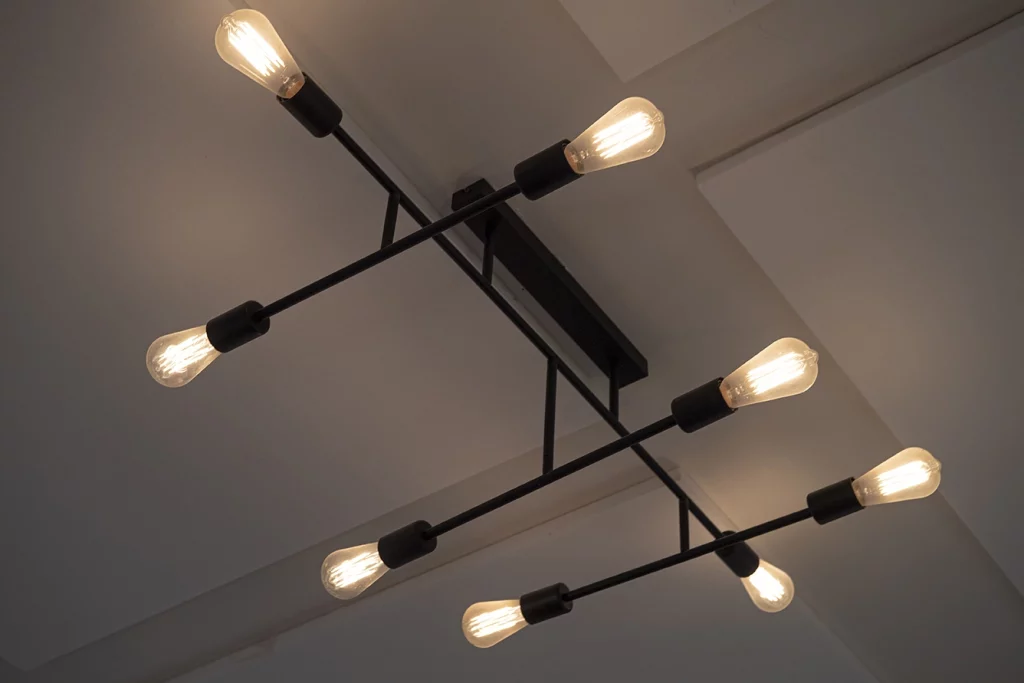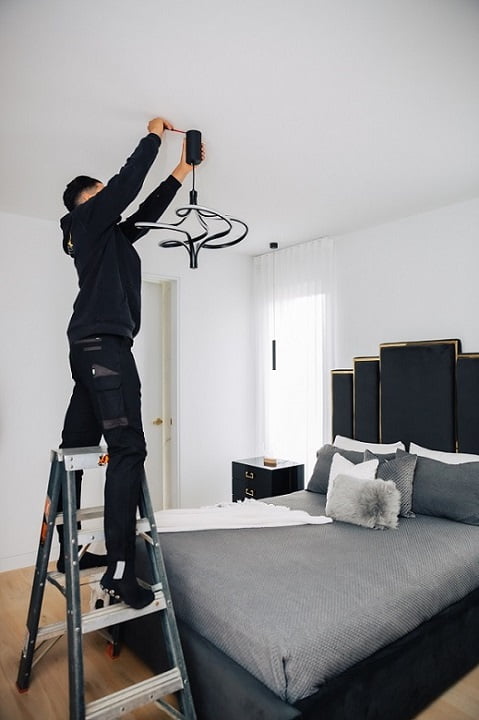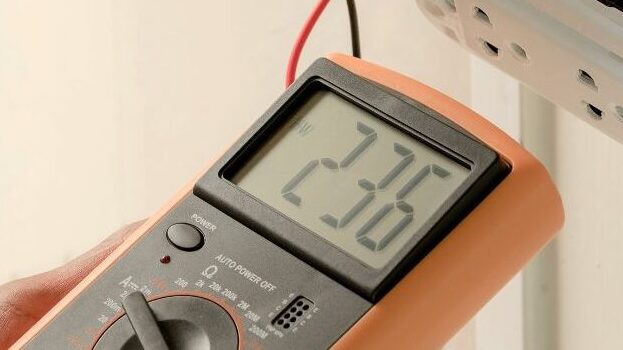Uncover the Key Factors Leading to Your LED Light’s Unexpected Dimming
Immediate Solutions:
If your LED light is experiencing unexpected dimming, this could be attributed to a variety of factors including a voltage issue, an overloaded circuit, excessive heat, faulty connections, or even low-quality LED bulbs. Keep reading for in-depth solutions to effectively address these concerns.
Explore the Top 5 Causes of LED Light Dimming and Find Effective Fixes
LED lights are widely appreciated for their impressive lifespan, often touted to function efficiently for years without significant issues. However, it can be quite disappointing when some units fail to last even a single season. Whether you’re dealing with downlights in your kitchen, decorative garden lighting, or festive Christmas LED lights, experiencing sudden dimming can be both vexing and surprisingly common. In this comprehensive guide, we will investigate the main causes of LED dimming and equip you with safe and effective troubleshooting techniques to bring your lighting back to its full brightness.

1. Understanding How Voltage Drops Cause Unforeseen Dimming in LED Lights
The most common reason for LED lights unexpectedly dimming is a voltage drop. When the voltage supplied to the light fixture falls below the necessary threshold for the LED to operate correctly, you will observe a noticeable decline in brightness. But what exactly causes this issue? Let us delve into the various factors at play.
- Temporary disruptions in the power grid
- Local circuits experiencing overloads
- Long wiring runs utilising thin cables
- Faulty switchboards or inadequate connections
Voltage drops can present significant challenges, particularly with budget LED lights that often lack appropriate voltage regulation and show increased sensitivity to even slight voltage fluctuations. To achieve effective solutions, always consider upgrading to high-quality products that can better withstand such challenges.
Also Read: 10 Ways to Save On Power And Energy Costs
2. How to Recognise Overloaded Circuits in Older Homes
Overloading your electrical circuits by connecting too many devices or appliances can significantly strain your power supply. When a circuit is unable to meet the demand, the voltage distribution becomes uneven across the devices, resulting in dimming lights, especially for sensitive LEDs. This issue is particularly common in older homes that were built before modern energy-intensive technologies became standard. Signs that your circuits are overloaded typically include:
- Flickering lights
- Buzzing sounds from switches
- Dimmed lights, particularly in affordable LEDs that may lack essential protective features.
Request a Quote and Inquire About Our FREE Electrical Inspections
3. Steps to Address Loose Connections and Damaged Wiring
Inadequate power delivery can often be traced back to loose fittings or ageing cables. If your light flickers or dims when you adjust a switch or device, it may indicate that there are loose connections. Here are some vital areas to check:
- Ensure the bulb is firmly seated
- Watch for flickering at the wall switch
- Inspect for burn marks, discoloration, or unusual buzzing noises
Important: Many low-cost LED lights utilise thin or poor-quality internal wiring, making them more prone to failure due to heat or movement. Regular inspections and maintenance are crucial in preventing unexpected issues from developing.
Also Read: Keep Your Pets Safe Around Electricity
4. Understanding the Risks of Overheating in LED Lights
While LEDs produce less heat than traditional incandescent bulbs, they still require effective heat dissipation to function properly. If an LED overheats, it will automatically dim as a self-protective measure. Overheating can be triggered by several factors, including:
- Enclosed light fittings that restrict proper airflow
- Faulty heat sinks, particularly in budget models
- Excessively high ambient temperatures
- Insufficient air circulation around the fixture
If your LED housing feels hot to the touch, it is likely suffering from overheating. This issue is especially prevalent with inexpensive, poorly ventilated LED downlights or garden lights that are installed in direct sunlight without appropriate thermal protection.

5. Exploring the Impact of Lumen Depreciation on LED Brightness Over Time
Even the most superior LEDs will gradually diminish in brightness with prolonged use, a process known as lumen depreciation. High-quality LEDs can retain about 70% to 90% of their brightness after around 50,000 hours of operation. Conversely, cheap LED products may begin to lose their intensity after just 5,000 to 10,000 hours, often doing so unevenly. If your light appears to be:
- A budget model, it may be nearing the end of its operational lifespan.
- Several years old and heavily used
- In frequent use
What Causes Budget LED Lights to Fail Prematurely?
During festive periods, inexpensive LED lights flood the market, available in various formats such as string lights, downlights, garden features, and more. The potential hazards associated with these products include:
- Inconsistent voltage tolerance: making them vulnerable to dimming and flickering
- Poor heat management: increasing the chances of overheating
- Subpar drivers: which fail to effectively manage electrical currents
- Lack of weatherproofing: making them unsuitable for outdoor use
Holiday Tip: When shopping for LED Christmas lights, opt for products that feature:
- IP65+ waterproof rating
- Certification compliance marks (e.g., RCM)
- Reputable brands (steer clear of lesser-known bargain brands)
While choosing cheaper lights might seem economical initially, they can lead to increased expenses in terms of replacements, safety, and long-term frustration.
Practical Solutions for Resolving Dim LED Lights
Thoroughly Check for Loose Connections and Signs of Overheating
Start by meticulously inspecting your light fixture. Is the bulb securely installed? Are there any visible signs of fraying, corrosion, or damage? If you notice anything out of the ordinary, do not attempt to repair it yourself, especially if wires are exposed or if the fixture appears burnt or melted. Carefully touch the fixture; if it feels excessively hot—like “it-could-cook-an-egg” hot—that is a significant warning sign. Overheating fixtures pose serious risks and often necessitate replacement.
Need help? We are Beacon Lighting Recommended Electricians, and installing and replacing LED fittings is our area of expertise. Whether you’re located in Braybrook, Yarraville, or surrounding areas, Electrx can resolve the issue promptly and safely.
Utilise a Multimeter to Evaluate Voltage Levels
If your LED appears dim due to low voltage, employing a multimeter will aid in pinpointing the issue. Testing the voltage at your LED fixture will reveal whether your lights are receiving the appropriate power supply. Compare the voltage measured with the recommended voltage for your specific LED lights. If the voltage is lower than expected, this may clarify the source of the dimming. Should the voltage consistently fall short, you may be facing a more significant electrical issue and should enlist the services of a qualified electrician for further evaluation.
If you discover low voltage across multiple fittings, there is likely a larger wiring or switchboard issue at play.

Evaluate Dimmer Switch Settings for Compatibility
We often receive inquiries along these lines:
“Why is my light dim?”
Us: “Do you have a dimmer switch?”
Them: “…oh.”
Ensure that no accidental adjustments have been made to the dimmer, or check for compatibility issues with your LED model, as this can frequently lead to unexpected dimming.
Test the Circuit by Switching Off Other Appliances
Try turning off other devices connected to the same circuit as your LED lights. If your lights brighten, you are likely dealing with an overloaded circuit. Consider implementing the following strategies:
- Redistributing devices to different circuits to balance the load
- Upgrading your switchboard for enhanced performance
- Replacing budget LEDs with higher-quality models to ensure longevity
Also Read: Electrical Upgrades For Your Office
Replace the LED Bulb if Necessary to Restore Full Brightness
If none of these solutions alleviate the issue, your LED may simply be reaching the end of its lifecycle. Test by swapping it out with another LED bulb from your home. If the replacement bulb restores full brightness, the old bulb was likely due for replacement. In that case, go ahead and purchase a new LED bulb. However, if changing bulbs does not resolve the issue, the underlying cause likely lies elsewhere, warranting further investigation.
Essential Insights on LED Dimming Challenges
So, why did your LED light suddenly exhibit dimming? The potential causes could encompass:
- Voltage drops affecting performance
- Loose connections disrupting the flow of power
- Heat accumulation compromising functionality
- Circuit overload due to an excess of devices
- Or the LED itself—especially if it is a budget model
With this guide, you are now well-equipped with the knowledge of what to check—and how to effectively rectify the situation.
However, if you are uncertain or notice any signs of damage, never compromise on electrical safety.
Allow Electrx to Provide Professional Assistance for Your Lighting Solutions
We are licensed electricians and recognised installers for Beacon Lighting. Our services encompass:
- Testing and replacement of LEDs to ensure safety and efficiency
- Circuit diagnosis to identify and resolve electrical issues
- Solutions for overload and overheating challenges within your home
- Safe, long-lasting electrical upgrades tailored to your requirements
If you have any uncertainties regarding electrical issues, it is always prudent to consult a professional electrician, such as Electrx Electricians. Reach out to us today for expert assistance and reliable service.

Frequently Asked Questions About LED Lighting Troubleshooting
Q: Why is my new LED bulb already dim?
A: This dimming could be due to a voltage drop, faulty wiring, or a low-quality LED that lacks adequate voltage regulation. Consider replacing it with a high-quality LED first to see if that resolves the problem.
Q: Do budget LED lights experience dimming more quickly than high-quality options?
A: Absolutely. Inexpensive LEDs typically lack sufficient heat sinks and stable drivers, which results in premature lumen loss, flickering, and dimming—particularly in hot or outdoor environments.
Q: Why do my Christmas lights flicker and dim over time?
A: Seasonal LED string lights are often manufactured using lower-grade components. Environmental exposure, overuse, and power surges can all contribute to dimming. Always choose outdoor-rated, certified lighting to ensure durability and performance.
Q: Can I address dimming LED lights on my own?
A: You can perform basic troubleshooting by checking fittings, testing voltage levels, and replacing the bulb. However, if the issue persists—particularly across multiple fittings—contact a licensed electrician for professional assistance to ensure safety.
The Article: LED Light Dim? Discover the Reasons Behind It first appeared on https://writebuff.com
The Article LED Light Dim: Uncover the Causes of Dimming Issues Was Found On https://limitsofstrategy.com



